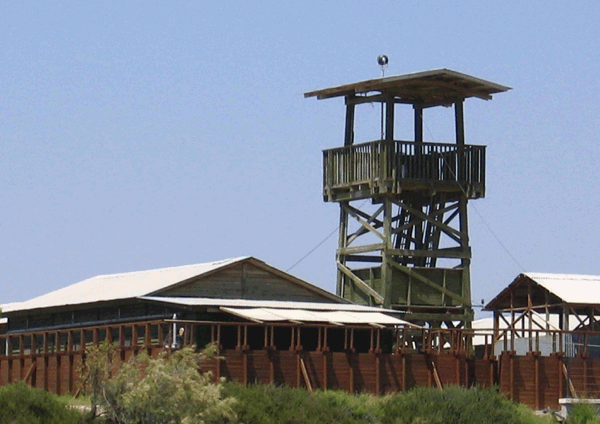Homa U’Migdal Museum
December 2nd 2010
The Homa U’Migdal Museum on Kibbutz Nir David in the Galilee tells the story of the ingenuity of the Jewish settlers in Palestine between 1936 and 1939, before the establishment of the State of Israel. The museum’s name means “tower and stockade,” a reference to a specific type of construction that made it possible for small groups of Zionist pioneers to establish communities literally overnight. As modest as it was, the Homa U’Migdal style of construction was sufficient as a loophole during the British Mandate to allow the pioneers to establish sovereignty over pieces of land.
This clandestine construction method was necessary to counter the British resistance to Jewish immigration. Because an antiquated law, left over from the pre-World War I era of Ottoman rule, allowed for existing communities to remain in place, once a Homa U’Migdal community was established in the middle of the night, it could not be dismantled. In this way, more than 50 new agricultural communities were established throughout Israel.
Today, the museum preserves the memory of these early years and their struggles. Visitors can learn how the Homa U’Migdal settlements were actually established, including what tools were used and how security arrangements were provided for the initial small groups of settlers. You can also experience an exact replica of one of the earliest tower and stockade settlements from 1936. The first of its kind became a model for dozens of other similar settlements. You’ll be able to see the sheds that were built for the first residents, the large tent that served as a community center and dining hall, and the gravel-filled defense wall surrounding the entire enterprise. Climb the tower for a stunning view of Emek HaMa’ayonot.
Furniture and ordinary household items, including mosquito netting used to protect the settlers from contracting malaria, are on display. Take photos of your group dressed in clothing from the period and screen a film about the Arab Revolt that took place during the Homa U’Migdal years. With advance arrangements, you can order meals that echo what the early pioneers ate, and children can participate in building a model of a Homa U’Migdal settlement.
Much of the museum is handicap-accessible but there are steps between the first and second floors. Also, if you’re visiting in the summer, make sure to bring hats, sunscreen and plenty of drinking water, as the area can become extremely hot.












